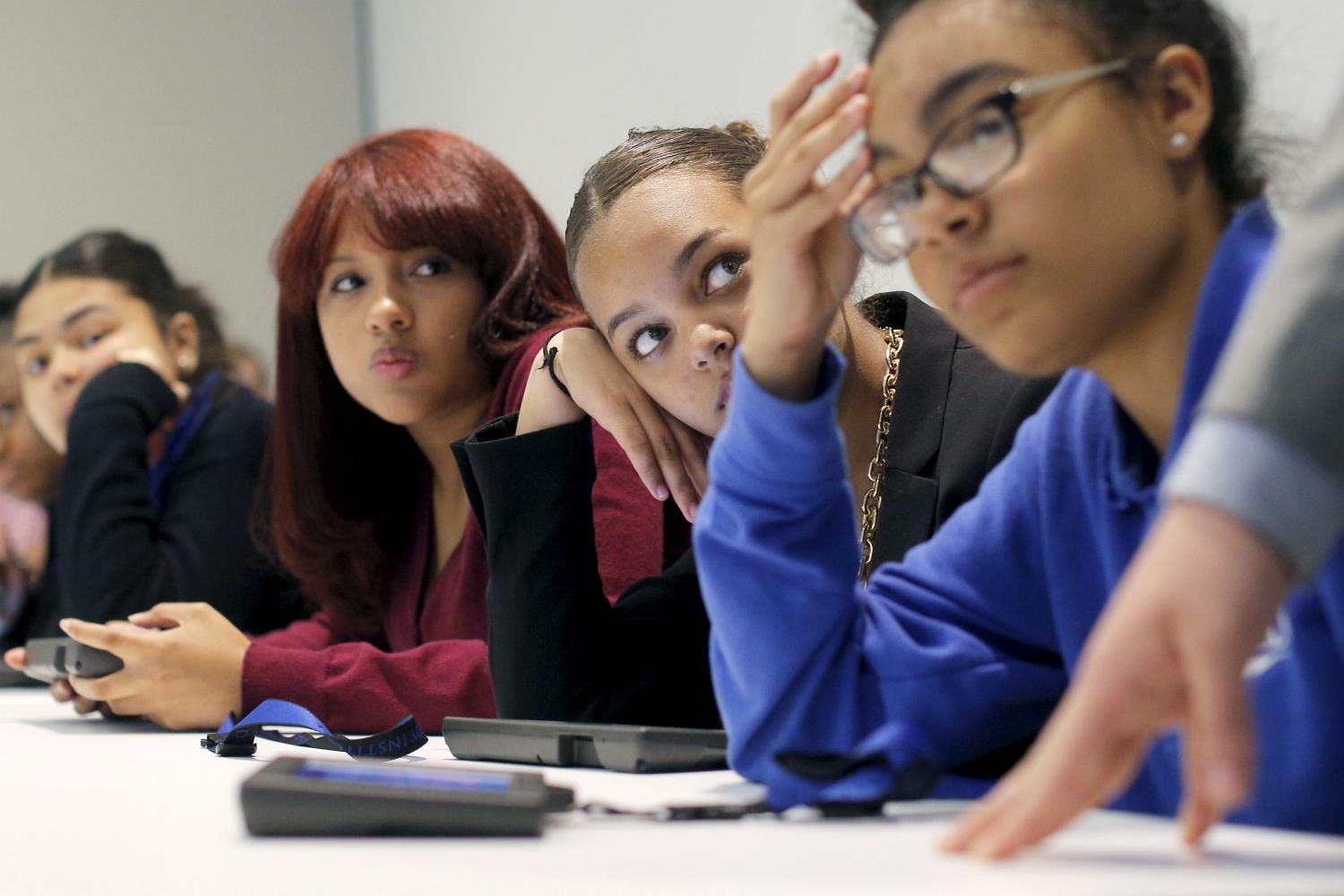Why are black Americans at greater risk of being poor? This is a complex and contested question, one that has exercised scholars and politicians for decades. One of the most sensitive issues is the relative importance of individual effort and responsibility, compared to the impact of historic and ongoing racial discrimination. (One of the best contributions to this field in recent years is Patrick Sharkey’s Stuck in Place, suggesting that structural factors play the greater role.)
In a review of Ta-Nehisi Coates’ Between the World and Me, Rich Lowry, the editor of the National Review, fires another volley in this long-running battle. He suggests that Coates puts too much weight on systemic racism in explaining the struggles of black Americans. What’s needed, Lowry argues, is more focus on individual responsibility, and to stop denying “the moral agency of blacks, who are often depicted as the products of forces beyond their control.”
Lowry suggests that black Americans would be better served if Coates made his readers aware of a “little secret” set out in previous research by our colleagues, Isabel Sawhill and Ron Haskins, which assesses the likelihood of economic success conditional on achieving three middle class “norms,” which they call the “success sequence.” Lowry correctly reports that about three-quarters of Americans reach the middle class provided that they:
- Graduate from high school;
- Maintain a full-time job or have a partner who does; and
- Have children while married and after age 21, should they choose to become parents.
Unlike Lowry, we are able to further breakdown the number of people who reach the middle class or follow the norms by race using the dataset from in the original paper by Sawhill and Haskins, updated for 2013. The bottom line is that even when black Americans do follow all three norms, their economic prospects are worse than whites.
…even when black Americans do follow all three norms, their economic prospects are worse than whites.
THREE NORMS: THE BLACK-WHITE DIVIDE
White Americans are significantly more likely to demonstrate all three norms than black Americans: about 65 percent compared to 45 percent. Rates of high school completion are similar, but whites are significantly more likely to have a full-time job and to delay childbearing than blacks:

There are big questions here about the large race gaps in labor market activity and family formation, which are being addressed by scholars and policy-makers. A range of inter-related factors are at play here, involving the education system, the political system, and the workings of the job market. To take just a couple of examples, black children attend worse schools, in part because local tax and property laws prevent their parents from moving to neighborhoods with better schools. There are also stark gaps in the perceived treatment of blacks and whites in the criminal justice system, with significant knock-on effects for employment and family life.
Success sequence equals more success for whites than blacks
What happens to those who do follow the norms? If Lowry is right, and black Americans simply need to take responsibility and follow middle class norms, it should be the case that blacks and whites who follow all the norms reach the middle class at similar rates. The data suggest otherwise.
Among those who follow all three norms, blacks are significantly less likely to reach the middle class than whites who do the same. About 73 percent of whites who follow all three norms find themselves with income above 300 percent of the federal poverty line for their family size, while only 59 percent of blacks who adhere to all three norms fare equally well:

Of course, there may also be differences by race above the 300% federal poverty line, so we delve a little deeper here. We find that blacks and whites who follow the three norms have about the same likelihood of ending up near the middle, with incomes three to five times the federal poverty line (about $60,000 to $100,000 for a family of three). But white norm-followers have better odds than their black equivalents of ending up in a more affluent household—whites are 10 percentage points more likely, for example, to have an income at least seven times the poverty line:

WHICH NORMS MATTER MOST?
A related question is whether some of the norms matter more than others, in terms of understanding these inequalities by race. It is hard to empirically isolate the impact of each of the norms. But we can look at the cost of missing any particular one. If income is mostly equal between groups of blacks and whites who uphold two of the norms but break a third, it is suggestive that the norm in question is less central to the inequality between groups. We find that whites who break only one rule enjoy success at higher rates, on average, and that breaking norms related to work and childbearing are associated with greater inequality than not getting a high school diploma:

WHAT ABOUT BALTIMORE?
The data presented so far are national; but of course there could be significant variation between different areas, especially cities. In Baltimore, blacks who follow the norms are much less likely to get ahead than whites. That pattern holds up across very different cities, like Denver, New York, and Minneapolis:

In fact, the differences hold up across many different cities. In almost every city we examined, the proportion of blacks who follow all the norms that reach the middle class is well below the proportion of white norm-adherents who do so, often by 10 percentage points or more.

Promoting success for all
The debate over individual responsibility and substantive opportunity is too simplistic. Nobody can sensibly deny the need for both. But for policymakers committed to improving opportunity and mobility, the urgent question is: “What are we going to do?” Most Americans of all races aspire to the norms captured in the success sequence. But the hurdles are clearly higher for some groups—especially black Americans—than others. And the pay-offs from following the success sequence clearly differ by race. There are solutions to some of these deep-rooted, systemic problems. Implementing tried-and-tested policies does not require us to wait for an answer to the questions Lowry poses.
New norms
A final point: the norms identified by our colleagues were based on an analysis of what mattered in the past for middle class status in the present. It is almost certain that these will change over time. So what might new norms look like? First, a high school education is probably no longer sufficient; some postsecondary education is increasingly important for attaining a middle-class income. Not everyone needs to go to college, but fewer and fewer middle class jobs will be in the reach of those without some postsecondary education.
Second, there is a growing marriage gap in America than may alter the role of marriage. Some commentators bemoan this turn of events, but in light of its decline, maybe a better norm is that any children are intentional: as Sawhill puts it, by design rather than by default. Whether married or not, it is clear that children who are intended fare better.
Last, for most people a full-time job remains an important precondition for middle class status. But as collective recent experience demonstrates, economic currents don’t always cooperate. Millions of people can find themselves out of work involuntarily, rather than as a personal choice (though for some it will be). For that reason, we need robust work support and training programs, to ensure that those who are forced out of work by a weak labor market will be able to sustain themselves and their families and to avoid skill atrophy while they are unemployed.
Even if the success sequence norms need occasional recalibration to fit changing times, racial disparities are likely to remain, and will not dissolve simply as a result of greater individual responsibility. There are other, deeper, factors at work.
Even if the success sequence norms need occasional recalibration to fit changing times, racial disparities are likely to remain, and will not dissolve simply as a result of greater individual responsibility.
Black Americans who meet traditional markers on the pathway to the American Dream are still less likely to get there than white Americans. Until we break the structural barriers that keep black Americans from reaping the benefits of their individual responsibility, arguments about why some don’t follow norms risk being beside the point.
The Brookings Institution is committed to quality, independence, and impact.
We are supported by a diverse array of funders. In line with our values and policies, each Brookings publication represents the sole views of its author(s).






